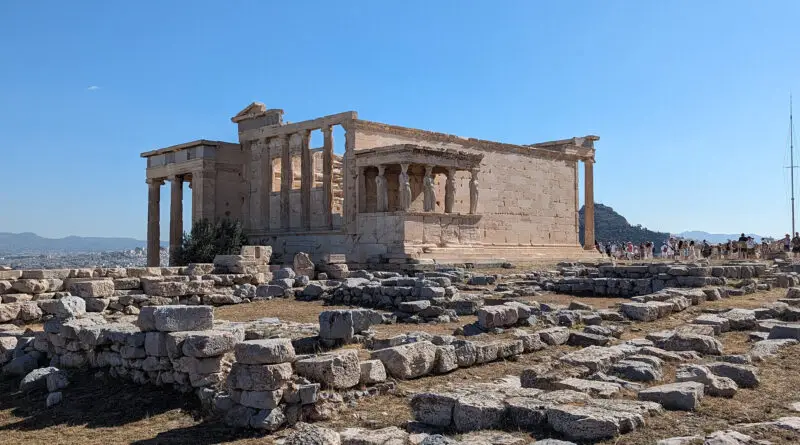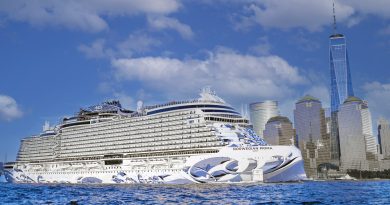Norwegian Viva Mediterranean Cruise Blog – Pre-cruise – Athens
It was the start of our 10-day sailing on the Norwegian Viva, and excitement was in the air. I first booked this cruise over 823 days in advance. The vacation would have many superlatives for me: it was the furthest out I booked a cruise, the most I ever spent on a cruise, the most days at sea, and the longest break I’ve ever taken from work, so there was a lot of pressure on this vacation.
This sailing would also give me some unique perspectives. On this cruise, I was sailing with four other people, three of whom had never cruised before and one who had never sailed Norwegian. That meant I’d get new insights. As you cruise more and more, it’s easy to get jaded and used to the status quo, so getting new views on cruises helps provide the best advice.
The sailing was a 10-day cruise that visited four different countries and nine ports, with only one sea day. It was going to be a whirlwind and mostly exhausting, far from a typical Caribbean cruise with three or four sea days of relaxing. Over the next few weeks, I’m going to take you through a play-by-play of our vacation, detailing each port and what we did both on land and sea.
Exploring Athens
The adventure began in Athens, a city steeped in over 3,000 years of history. It’s the birthplace of democracy, the site of the first theater, and a center of philosophy and religion for centuries. The rich tapestry of its history and culture made it the perfect starting point for our journey. We spent the first two days immersing ourselves in the history and life of this ancient city, setting the stage for the adventures to come.
We arrived at Athens International Airport at 8 AM. The nine-hour flight from the Newark airport in NJ wasn’t bad. Since there were five of us, we pre-arranged a shuttle to pick us up using Welcome Pickups. The cost was $92, so around $18 per person, and it was straightforward. We could have also taken the Metro for around $13 a person, but private transport seemed so much easier at that price. We boarded the private van and took the 45-minute drive from the airport to the downtown/tourist area in the heart of Athens.
Our hotel, Downtown Suites by Athens Tower Hotel, was in the heart of the tourist district in Athens, called the Monastiraki District. We arrived midday, and the streets were jam-packed with cars and pedestrians. A chaotic energy hung in the air, but far from the level of something like Times Square in New York City or tourist spots we’d see in the coming days.
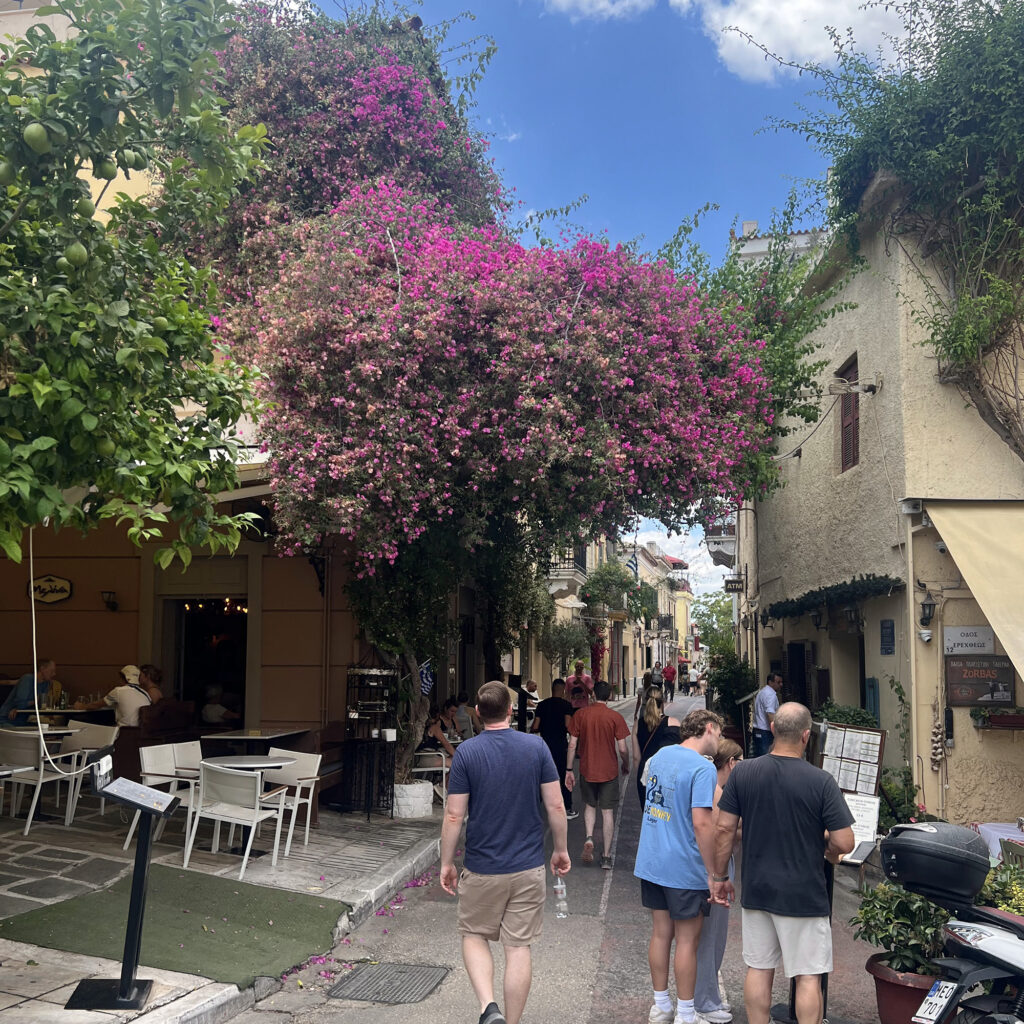
Athens’s unique vibe makes it hard to describe. Sometimes, it’d feel like a bustling metropolis like Seattle or Chicago. Other times, you’d be on a quaint side street reminiscent of those in Paris. You’d walk by a modern cosmetics store and, seconds later, pass a building from 100 BC. Buildings were covered in graffiti, not gang tags but street art from unemployed younger Athenians. It was a unique atmosphere that made Athens one of my favorite pre-cruise cities ever.
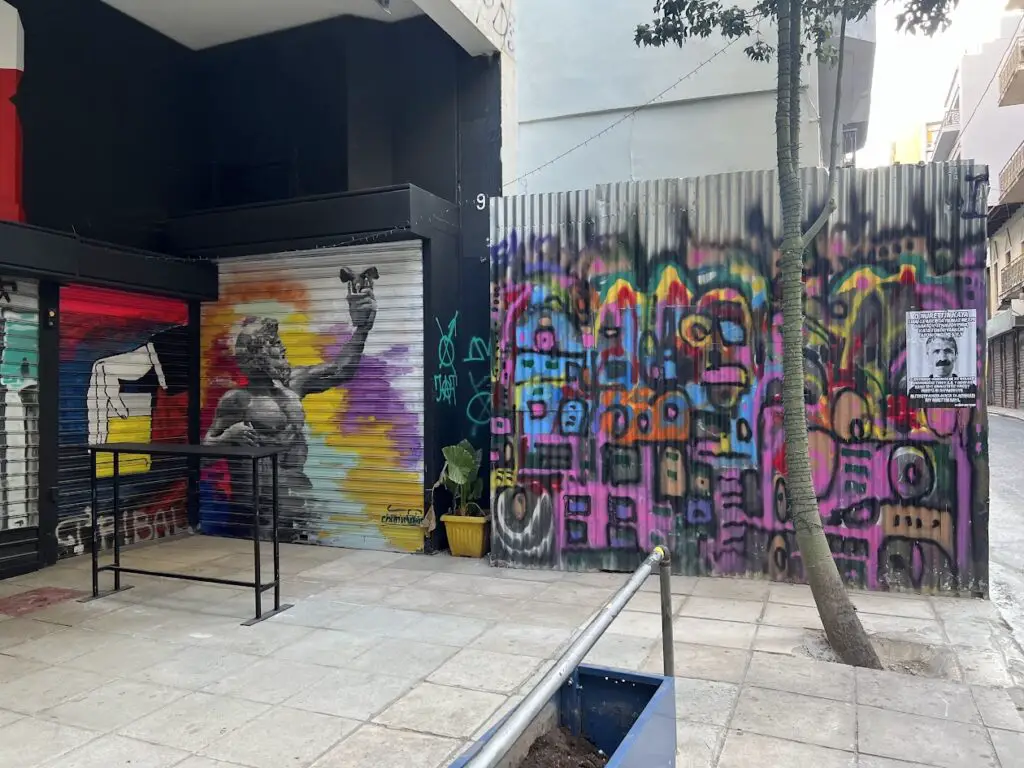
Athens is very tourist-friendly
In all the research I did for this trip, I was surprised two pieces of information didn’t come up. One was how friendly all the local Athenians were. The locals spoke English nearly everywhere we visited, and they were always friendly and helpful. Sometimes, when you visit a foreign country, you feel like an outsider; it did not feel that way at all in Athens.
The second thing was how affordable Athens was. Living in the New York City area and recently visiting London and Paris, I’m used to sky-high tourist prices. Instead, the prices in Athens were very reasonable. For dinner on the first night, our group of five spent 20 euros each, including appetizers, dinner, dessert, and drinks. On our nights out, premium cocktails only cost 12 – 14 euros, a fraction of the cost we’d pay in NYC. Even next to tourist sites, it was affordable. We grabbed some gyros for lunch right next to the Acropolis Museum, and they were 3 euro each. And the food was delicious; we didn’t have a bad meal the whole time.
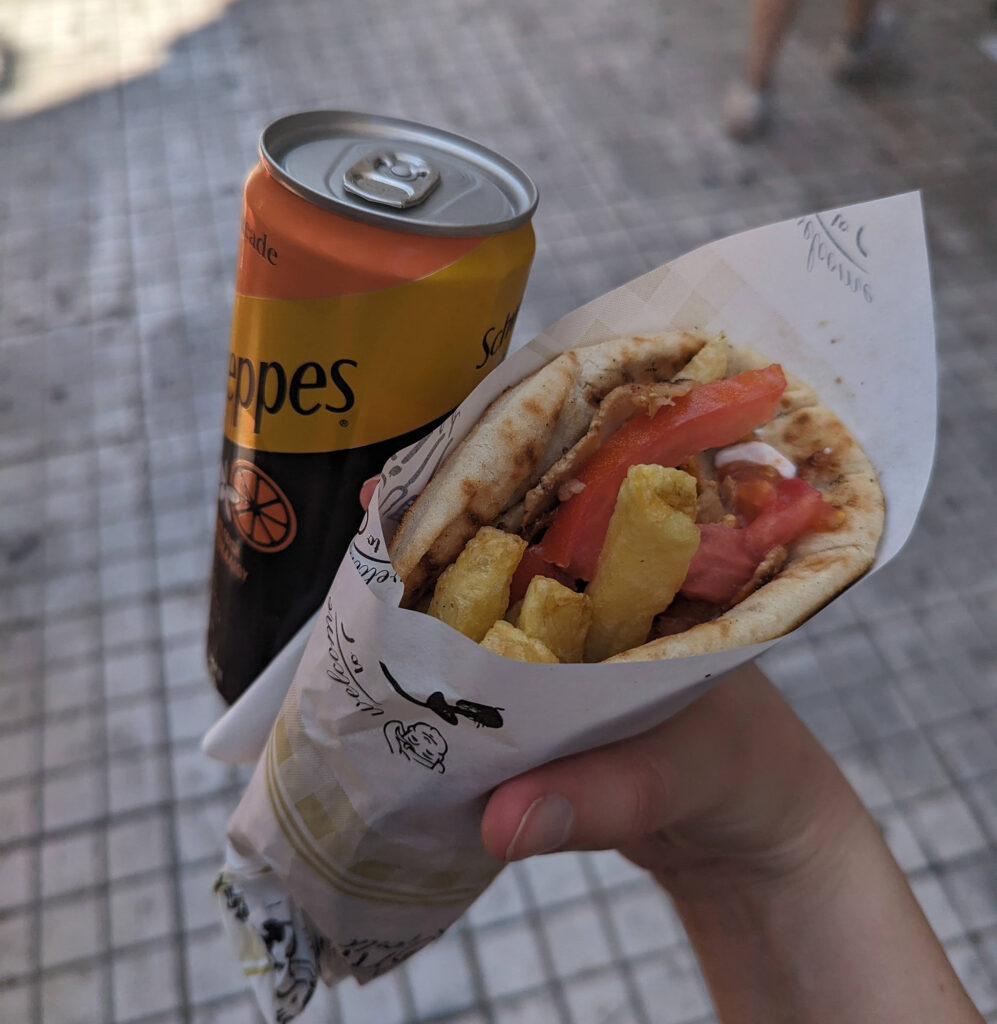
Exploring history in Athens
While in Athens, we saw many historical sites that had been built well over 2,000 years ago. It was hard for my brain to process how old these sights really were and how civilizations were able to build such impressive structures so many years ago.
To get access to the historical sites, we bought “Athena’s Combined Ticket” from the official government site. It gave us access to the Acropolis and six other historical sites and monuments for 30 euros.
Tip: Buying the ticket is confusing. When you buy the ticket, you select a date and time. What they don’t make clear is that the date/time is ONLY for when you want to go to the Acropolis. For any of the other sites, you can just show up and scan your ticket whenever you want. The pass is good for five days from the first time you scan it.
Philopappos Hill
We arrived in Athens before our rooms were ready, so we dropped off our bags and ventured to Philopappos Hill. It’s one of the highest points in Athens and provides amazing panoramic views of the city and Acropolis. The whole park is on an incline—it’s a hill, after all—so it got the adrenaline pumping to keep the jetlag from setting in. It’s also one of the least crowded “tourist attractions” we saw in all our time in Athens.
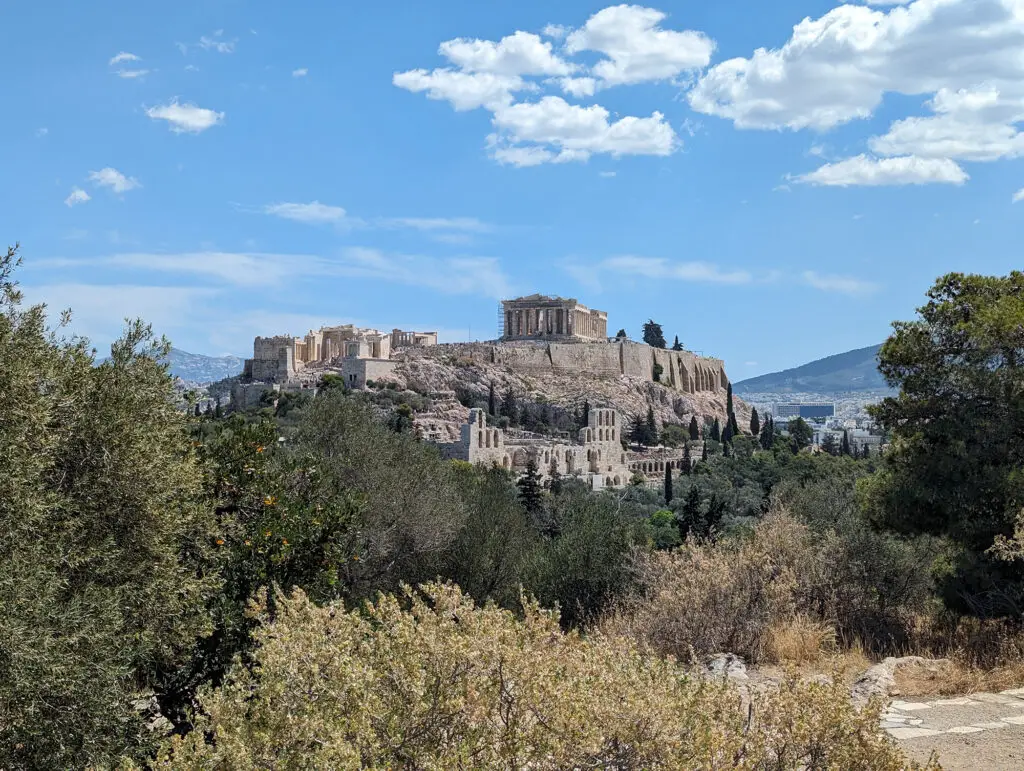
The hill has a few things you can visit. One is a cave that is believed to be the Socrates prison.
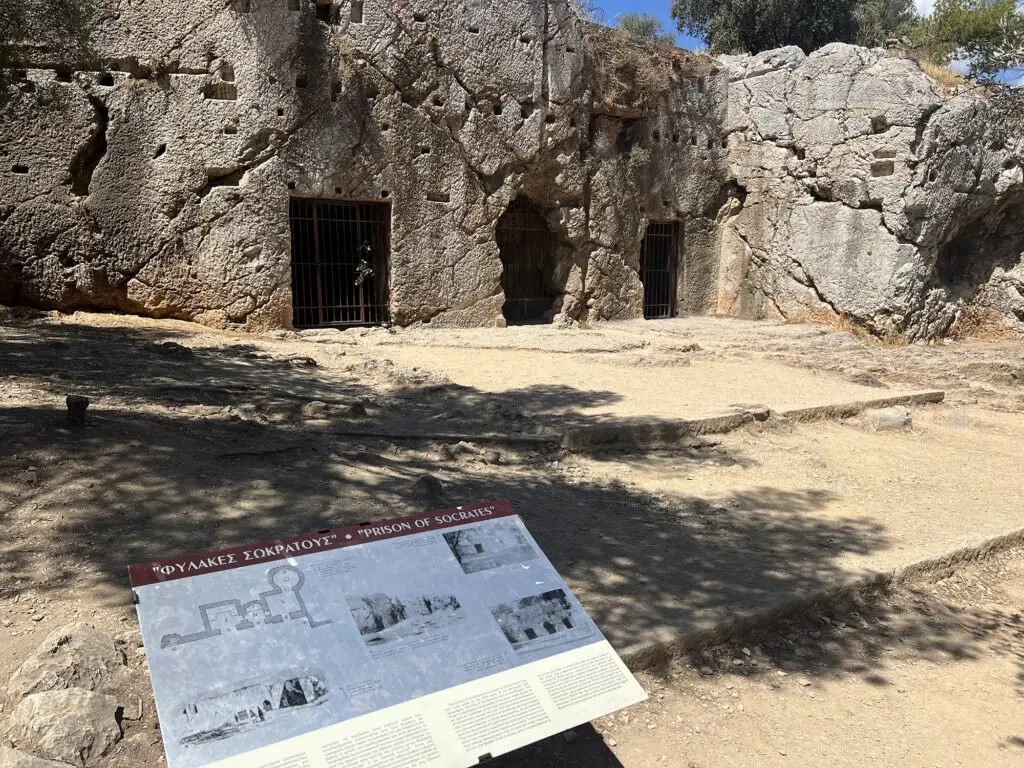
You’ll also see the Pnyx, literally the place where democracy was born. Here, 13,500 people would gather to hear speeches and make political decisions. Because much of this area was originally constructed of wood, there’s not a lot left to be seen, but it’s remarkable to see where the idea of democracy first emerged.

At the peak is the Philopappos Monument, a beautiful monument made of marble, part of which came from the Acropolis.
Acropolis
The Acropolis is the most well-known attraction in the city and has become synonymous with Athens over the years.
When we first bought our pass, we selected a 10 AM ticket time for the Acropolis. All of the advice said to go to the Acropolis early to avoid crowds, but now that the site has switched to timed entry, that seemed like less of a concern since there were capacity limits every hour. Still, going early was a good idea for a different reason…the heat. Two weeks after our visit, the Acropolis had to shut down in the afternoon due to excessive heat, and that was just mid-June. It’s even more of a risk come July and August.
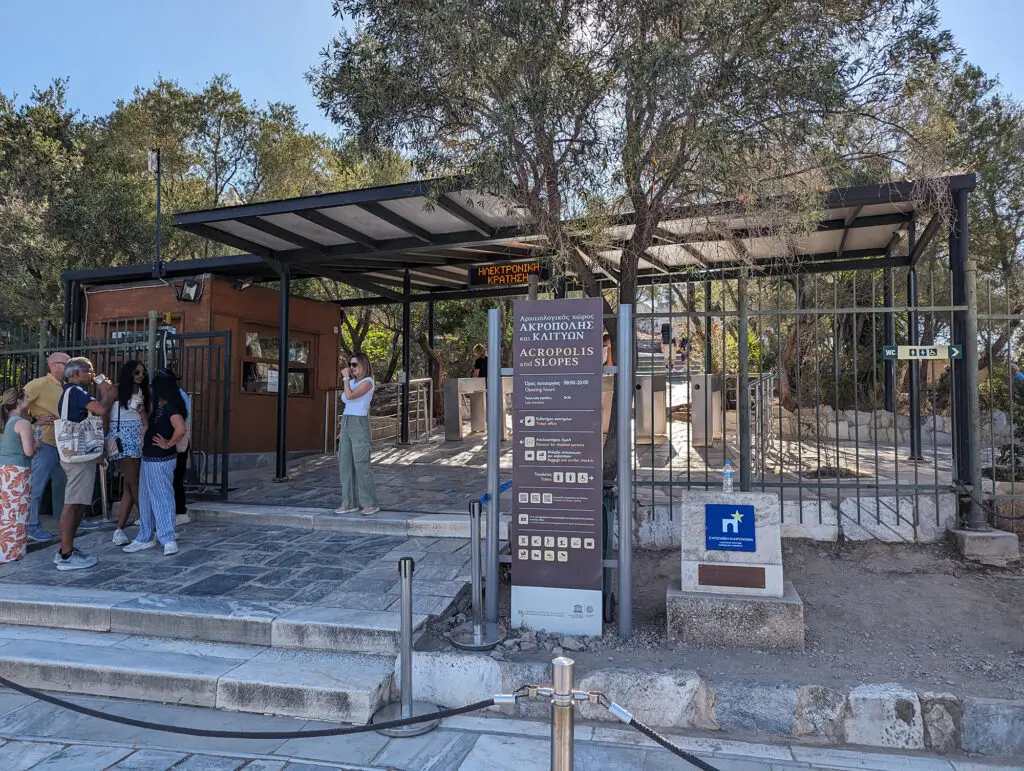
The tickets said to show up 30 minutes before the time, so we arrived at the Acropolis at 9:30. The lines to get in were empty, and we could walk right in. After we entered, we started to work our way up winding paths to the top of the hill.
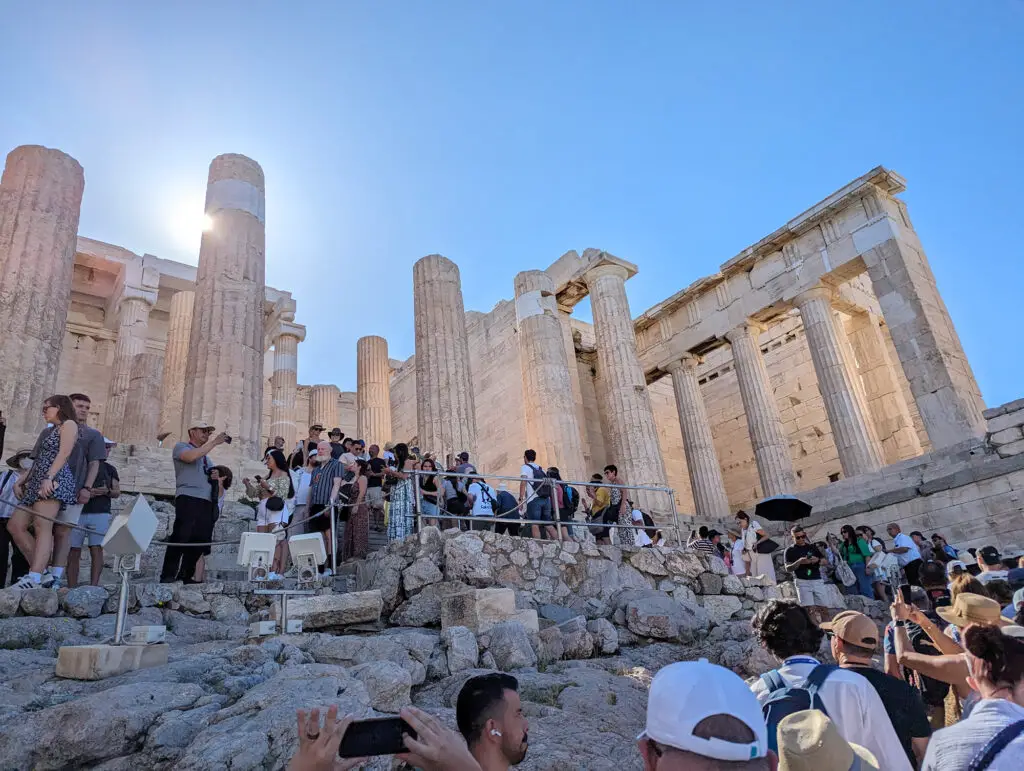
The worst part of the experience was getting in and out of the Propyla, or entrance. Massive crowds of people were funneled into small winding paths to enter through the stone pillars. People were trying to take pictures and make TikToks while blocking the line. It was a mess. But once we were in, the crowd dissipated. The top of the hill has several buildings to visit, so we had breathing room.
Tip: If you’re going to the Acropolis, avoid pictures when you first enter. You have MUCH better opportunities inside the area, and it will help the line move faster.
The scale of the buildings here was impressive. It was hard to believe these were from the 5th century BC! Standing there, I couldn’t help but be awe-struck by the ingenuity and dedication the early Greeks had to get everything up on this massive hill and build these beautiful structures.
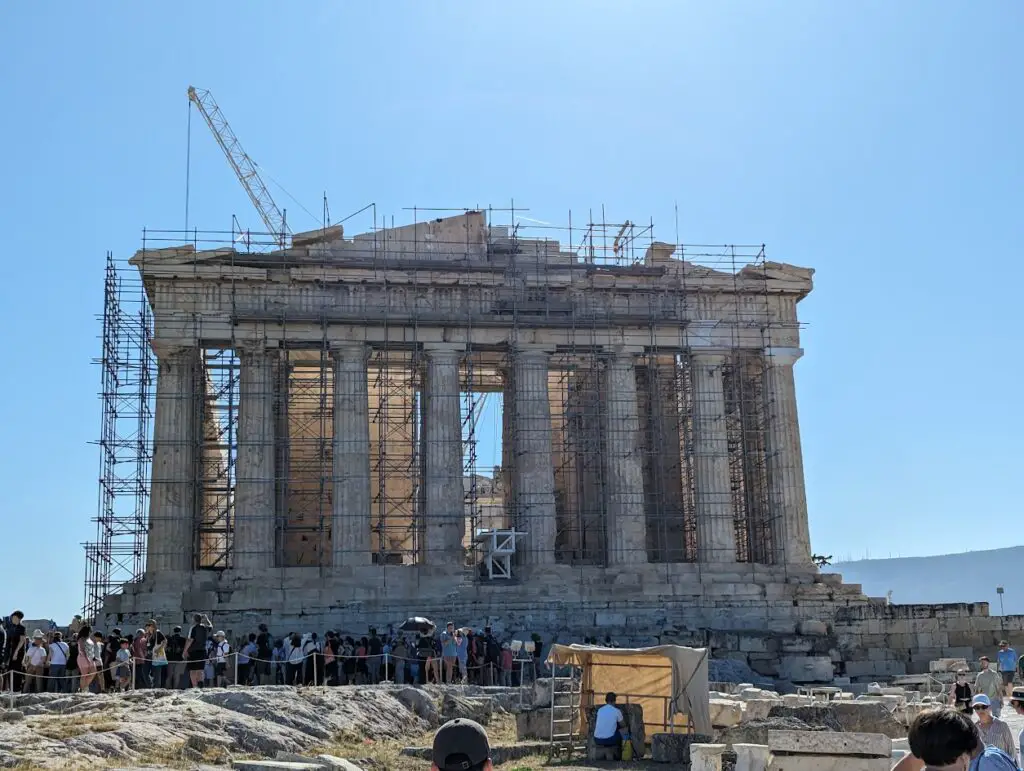
While there is signage around the park, it may be worth investing in an audio guide or booking a tour guide if you don’t know much about Greek history. Each build has its own rich history that you may miss just walking around on your own. Luckily, someone in our group was passionate about Greek mythology and acted as our tour guide, giving us details about all the sites we saw.
Acropolis Museum
The Acropolis Museum is separate from the archaeological site and located at the foot of the hillside. It costs 15 euros and contains many treasures originally from the Acropolis site. We actually went to the museum the first day before we went to the Acropolis (that was day 2). I prefer that order; it provided some context about what we’d be seeing atop the hill. We also saw some original sculptures and statues that now have replicas on the Acropolis itself.
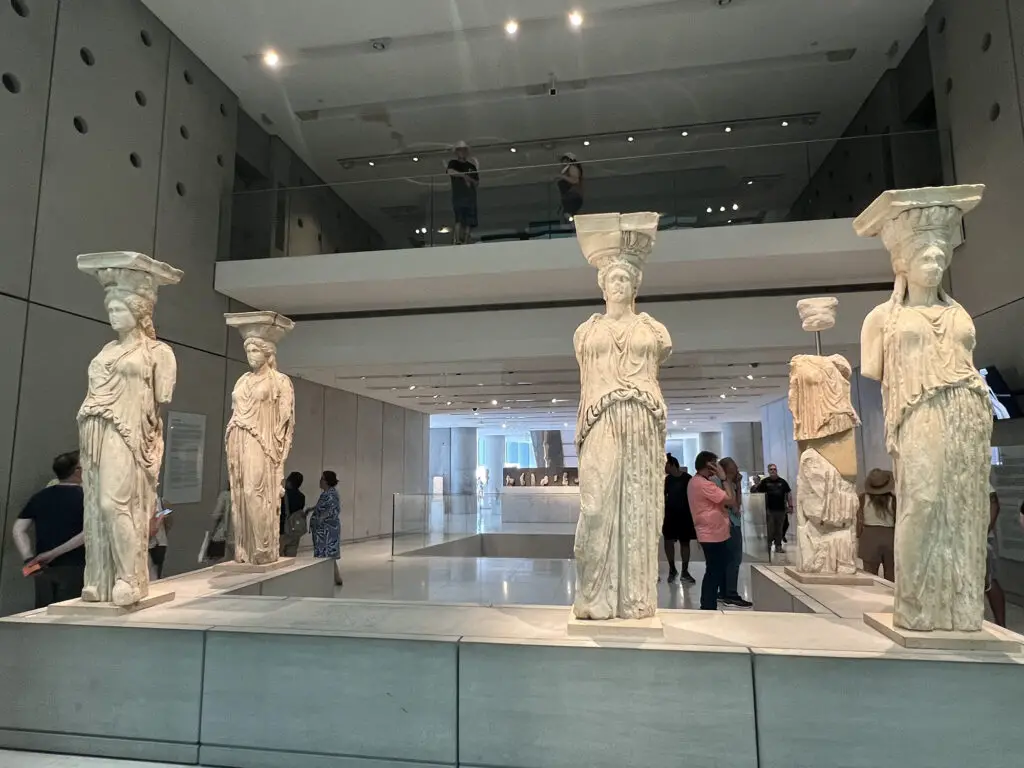
The museum had timed entry, but we just bought our tickets and walked right in. The space had powerful air conditioning and a was nice break from the hot sun. Overall, the visit was about 45 minutes.
Ancient Agora
After the Acropolis, we visited the Ancient Agora, or marketplace. Ancient figures Pericles and Socrates both spent significant time here as it was the heart of the ancient city. The site sprawled across several blocks, one of the larger sites after the Acropolis. The ruins here varied from ancient statues to blocks of rubble, but the best was the temple of Hephaistos. This building was in remarkable condition and was much more impressive to me than any building on the Acropolis because of how complete and well-preserved it was. I have a hard time looking at ruins and imagining how it was when fully built, but because the temple was so complete, it made it easier to understand what it was.

Hadrian’s Library
Because it was close to the hotel, we also visited Hadrian’s Library. The site dates back to 131-132 AD and was used to lecture, worship, and hold the city’s archives. Here, you can find remnants of columns and mosaics on the floor, but you won’t find complete buildings. It’s nice to check out if you’re walking by and have the Athens pass, but I wouldn’t go out of your way to visit here.

Panathenaic Stadium (Olympic Stadium)
We also took the opportunity to visit the Panathenaic Stadium. It’s the only stadium in the world built entirely of marble and was initially built in 400 BC. It’s in fantastic condition, though, because the government restored it to hold the first modern Olympics when they were reborn in 1896.

Panathenaic Stadium is not part of Athens’ city pass and costs 10 euro to visit. That price includes a free audio guide to walk you through the facility. It was surprisingly uncrowded, and fewer than 50 people were there along with us to explore the massive stadium.
Tip: While credit cards are widely accepted in Athens, it’s a good idea to carry euros around with you. Many public restrooms cost 0.50 – 2 euros and require cash. The restrooms at Panathenaic Stadium cost 1 euro.
We wandered up and down the marble stands. Part of the fun was scaling the massive stairs to the “cheap seats” at the top. The stairs were comically high, and the setup was somewhere between a riser step and a ladder.
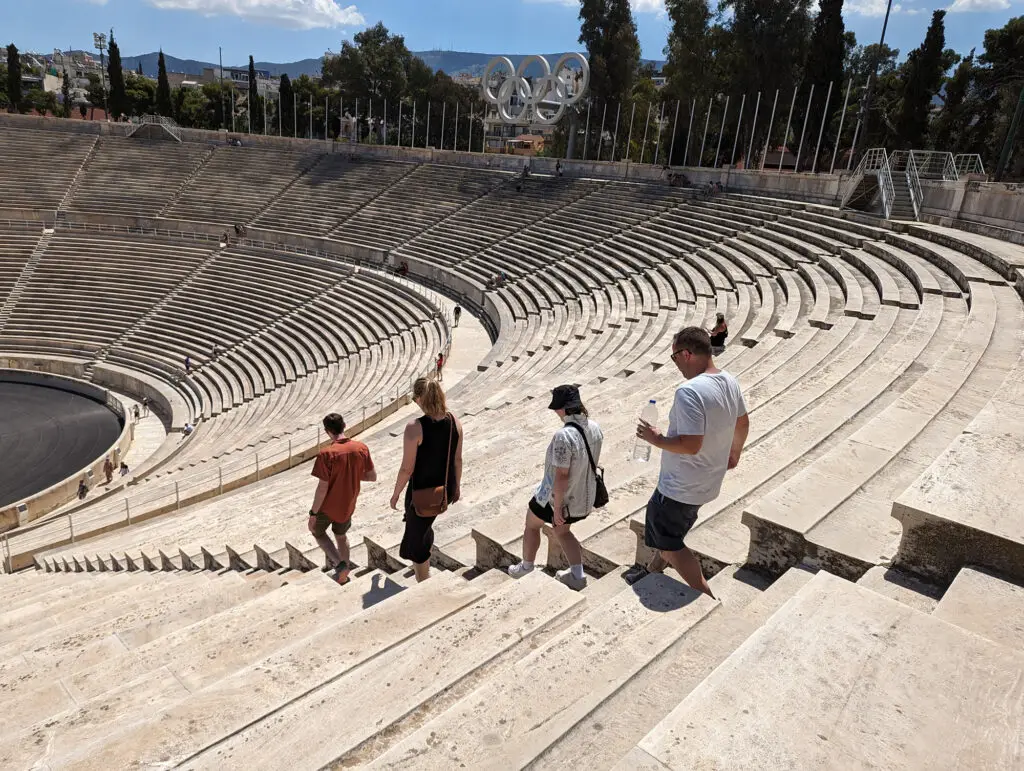
Usually, you’d also get to walk on the track and floor, but there would be an event later in the day at the facility, so those were closed. Still, the stadium was impressive.
Athens Rooftop food and bars
While in Athens, I had some fantastic local food and drinks.
Dinner at Efcharis
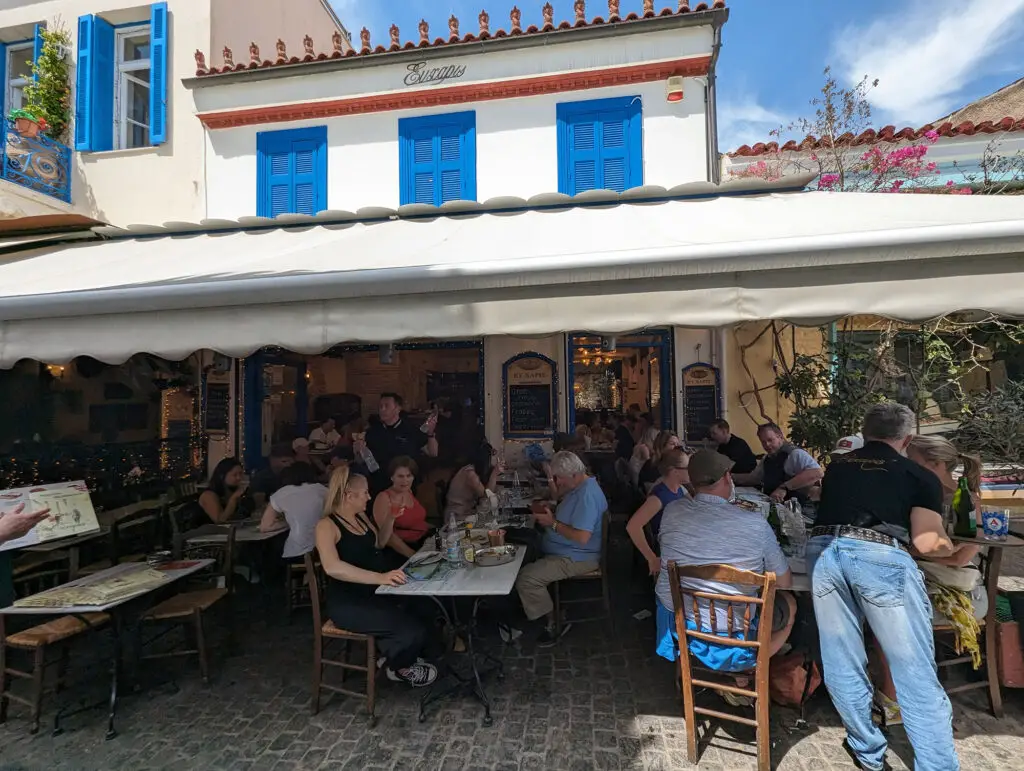
For dinner the first night, we went to Efcharis. Located in the heart of the tourist district and across from a Hard Rock Cafe, my expectations weren’t very high, but we were impressed. The host found us a prime table outside but under a shaded awning, allowing us to take in the hustle and bustle of the area without sweating. We ordered several platters of food to share with the table to try the local delicacies: grilled octopus and a variety of roasted meats and olives. We ordered way too much and were stuffed. Then, when we asked for the bill, they bought us complimentary desserts and a digestif (cocktail).
Lukumades
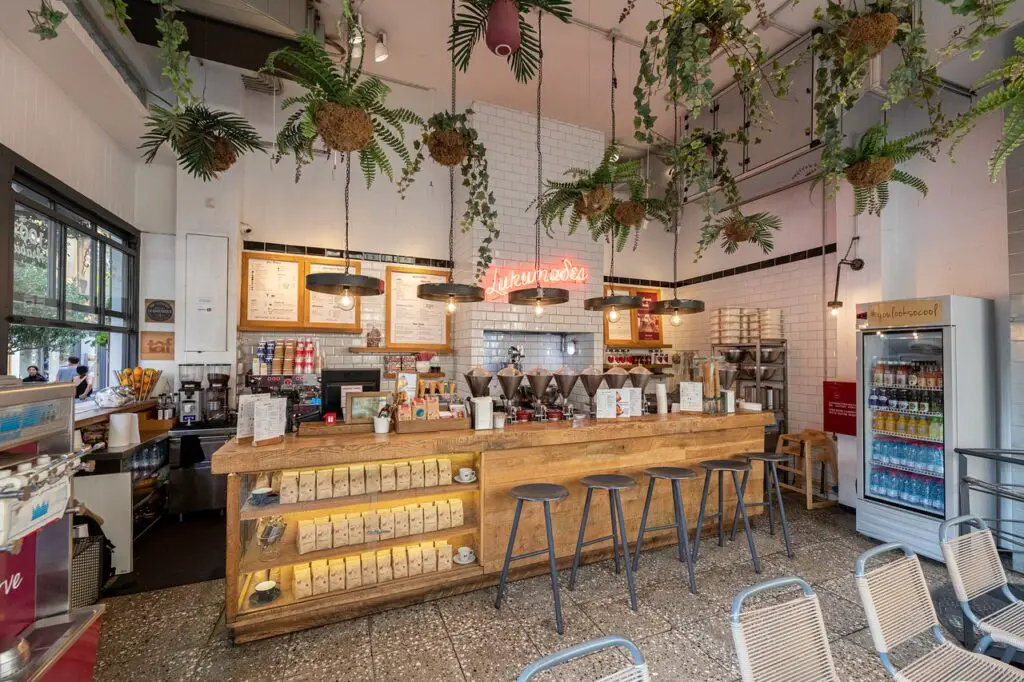
We also had lots of snacks in Athens. Some of my favorites were from Lukumades, which serves a traditional Greek dessert made of fried dough that can be stuffed and then coated in honey. They offered both sweet and savory versions, although the “sweet” ones weren’t very sweet compared to American standards. The honey drizzle added more texture than sweetness to the dish.
Varoulko Seaside
Another night, we went to Varoulko Seaside, a MICHELIN-rated restaurant located about 25 minutes from the tourist district on the water. It was a high-end dining experience, similar to something you’d see on a show like Top Chef. The menu was extensive, and since some of our party members weren’t the best at making decisions, we opted for the 11-course degustation, or tasting menu, which was only 135 euros.

While the three-hour dining experience was long, the food was some of the best I’ve ever had, with some unique combinations I’ve never thought of. (Note: almost any meal in Europe takes an eternity for someone from the Northeast US, easily taking 1.5 to 2 hours). My favorite was a dish with tuna, black garlic, lemon, corn, and onion, although the dessert, which was an apple dessert served with a carrot geranium puree, was a close second.
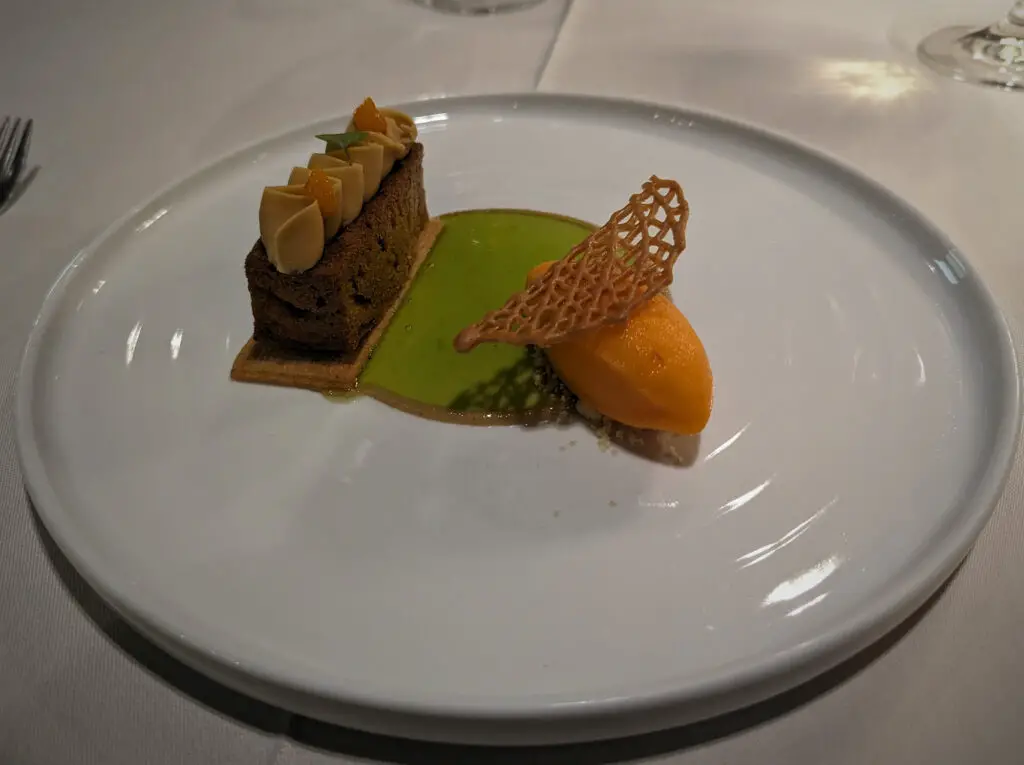
“A is for Athens” rooftop bar
Another night, we tried one of Athens’s many rooftop bars, “A is for Athens.” It offered an amazing view of the skyline with the Parthenon highlighted in the distance. Surprisingly, at 9 PM, it was only half full, making it a very exclusive-feeling experience.
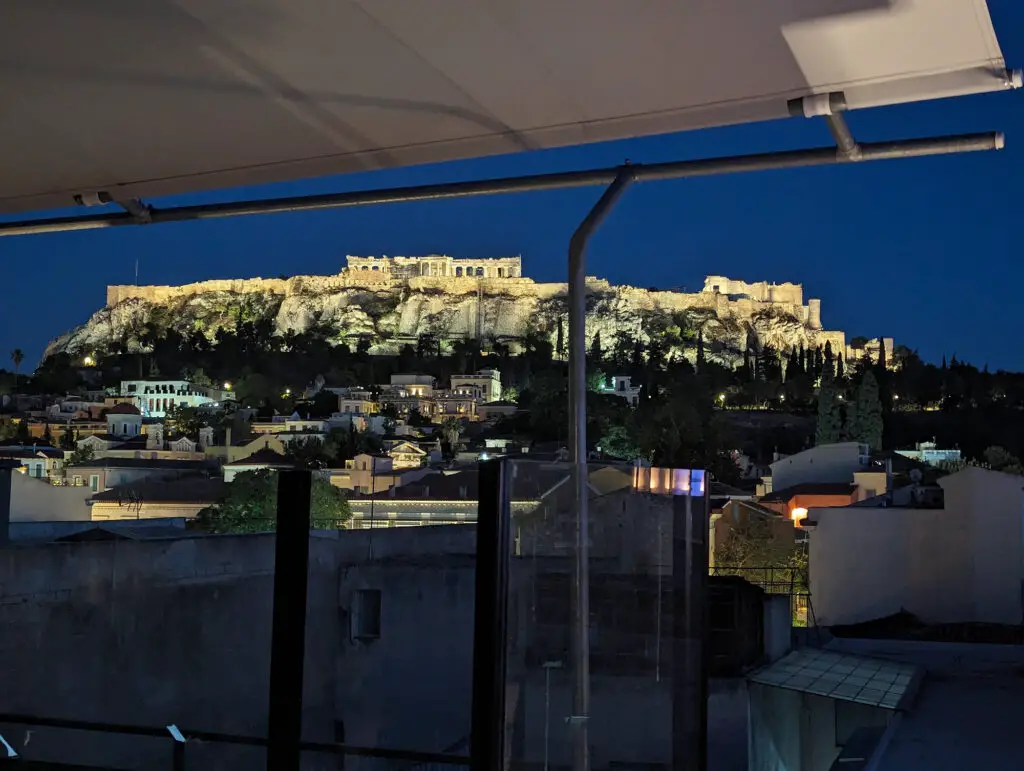
The bar also had a unique cocktail menu with drinks representing the heart versus the brain, each with a unique theme. My favorite cocktail here was “Fear,” which was vinegar caramel, lavender, homemade pineapple liquor, and vanilla aquafaba cream.

Getting around Athens
The main tourist area of Athens is very walkable, but it can be a workout. Roads and walkways can turn and go straight up the mountainside. Some could also be slippery because of the rock/stone used to make them. It’s still a beautiful walk with plenty of small streets lined with crawling purple flowers.
We walked most of the time while we were in Athens. The Parthenon and Acropolis Museum were only a 15-minute walk from our hotel, while other sites were 5 or 10 minutes away.
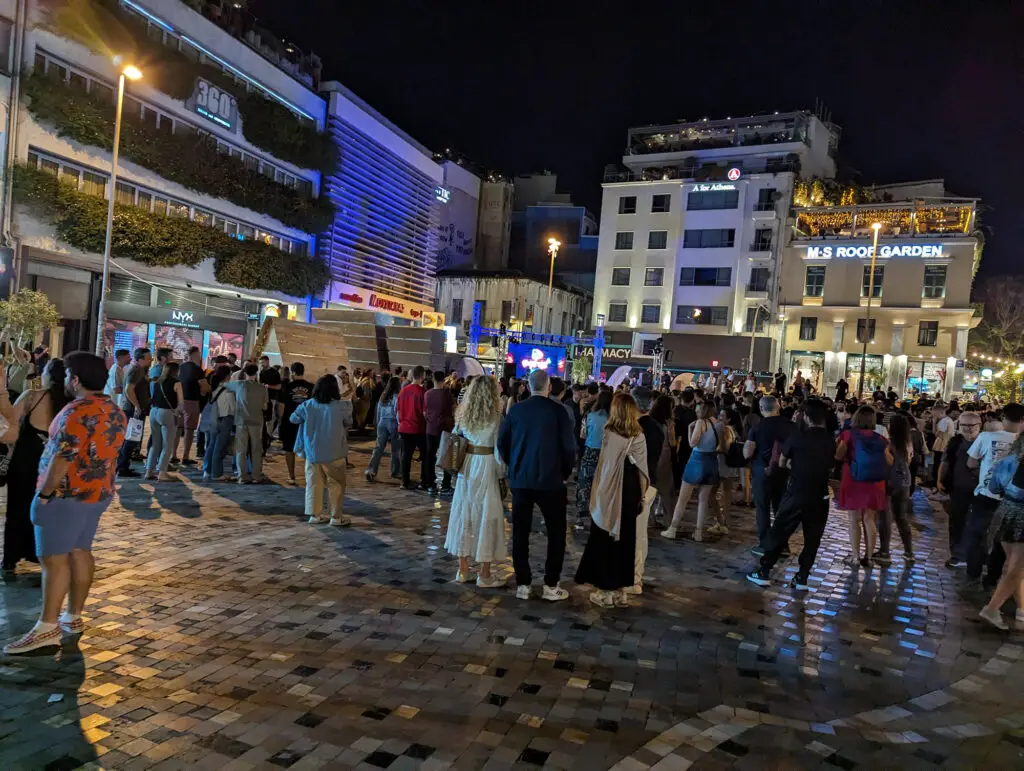
On the night we went to Varoulko, we took the Metro to the restaurant since it was far from the downtown area we were staying, and that was a little more bumpy. As someone who has used subways and trains all around the world, I found the system here to be confusing. After going in the wrong direction to start, we eventually figured out our way. It was a safe and quick ride, but I was glad we didn’t try taking it from the airport or the cruise terminal.
Uber works in Athens and is tied directly into their taxi system, meaning you’ll likely get an official taxi if you book a ride in Uber.
Overall, Athens was the perfect start to our Mediterranean adventure. I was surprised by how much I enjoyed the city; it set the bar high for the ports ahead. Over the next few weeks, I’ll take you along on our sailing on the beautiful Norwegian Viva and all the different ports we visited.
Follow along on our Mediterranean Adventure
Norwegian Viva – Cruise Blog - Pre-cruise – Athens
Norwegian Viva – Cruise Blog - Day 1 – Athens
Norwegian Viva – Cruise Blog - Day 2 – Santorini
Norwegian Viva – Cruise Blog - Day 3 – Kusadasi
Norwegian Viva – Cruise Blog - Day 4 – Istanbul
Norwegian Viva – Cruise Blog - Day 5 – Mykonos
Norwegian Viva – Cruise Blog - Day 6 – Sea Day
Norwegian Viva – Cruise Blog - Day 7 – Messina
Norwegian Viva – Cruise Blog - Day 8 – Naples
Norwegian Viva – Cruise Blog - Day 9 – Florence
Norwegian Viva – Cruise Blog - Day 10 – Nice
Norwegian Viva – Cruise Blog - Day 11 – Rome
5 Hits and Misses on Norwegian Viva
Want to stay up on all things cruising?
Follow us on Facebook, Instagram, Threads, or subscribe to our monthly newsletter.
CruiseSpotlight is an Amazon Associate. We may earn a commission when you click links to retailers and purchase goods.
